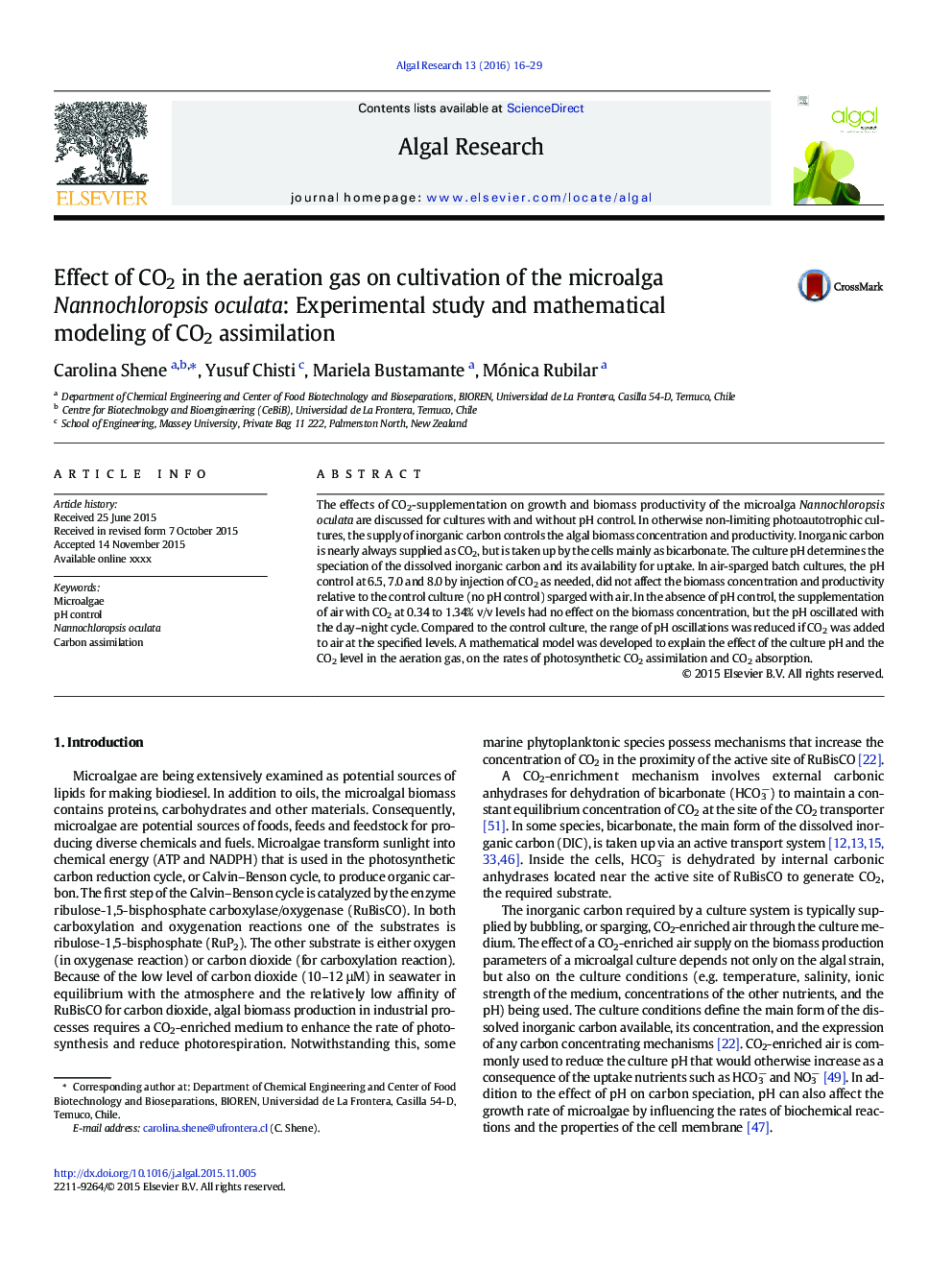| Article ID | Journal | Published Year | Pages | File Type |
|---|---|---|---|---|
| 8087445 | Algal Research | 2016 | 14 Pages |
Abstract
The effects of CO2-supplementation on growth and biomass productivity of the microalga Nannochloropsis oculata are discussed for cultures with and without pH control. In otherwise non-limiting photoautotrophic cultures, the supply of inorganic carbon controls the algal biomass concentration and productivity. Inorganic carbon is nearly always supplied as CO2, but is taken up by the cells mainly as bicarbonate. The culture pH determines the speciation of the dissolved inorganic carbon and its availability for uptake. In air-sparged batch cultures, the pH control at 6.5, 7.0 and 8.0 by injection of CO2 as needed, did not affect the biomass concentration and productivity relative to the control culture (no pH control) sparged with air. In the absence of pH control, the supplementation of air with CO2 at 0.34 to 1.34% v/v levels had no effect on the biomass concentration, but the pH oscillated with the day-night cycle. Compared to the control culture, the range of pH oscillations was reduced if CO2 was added to air at the specified levels. A mathematical model was developed to explain the effect of the culture pH and the CO2 level in the aeration gas, on the rates of photosynthetic CO2 assimilation and CO2 absorption.
Related Topics
Physical Sciences and Engineering
Energy
Renewable Energy, Sustainability and the Environment
Authors
Carolina Shene, Yusuf Chisti, Mariela Bustamante, Mónica Rubilar,
